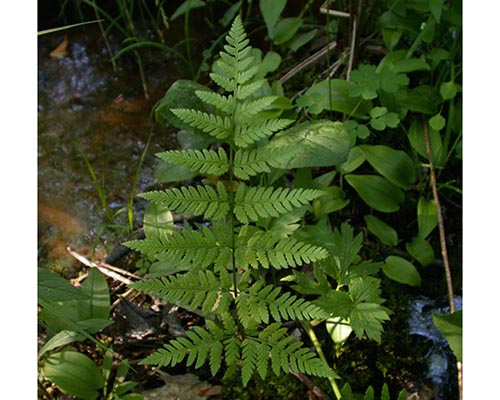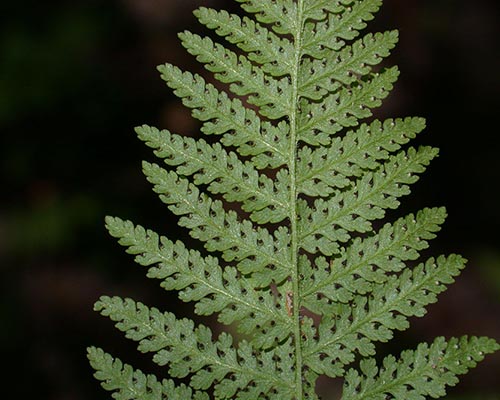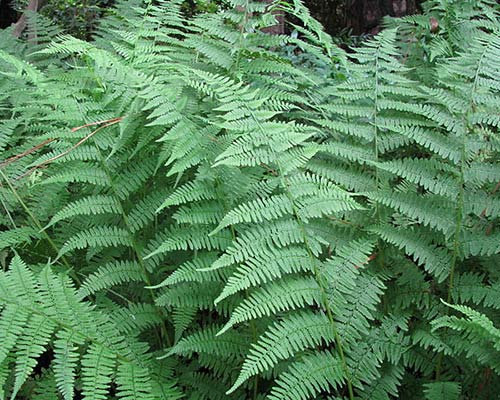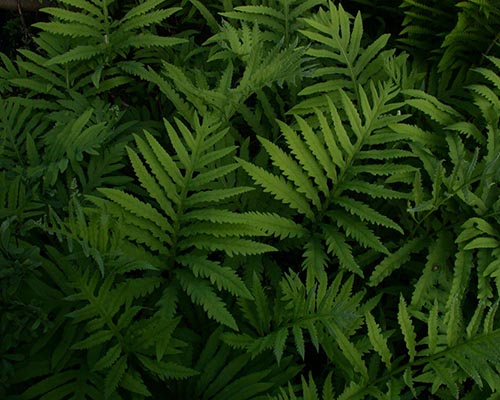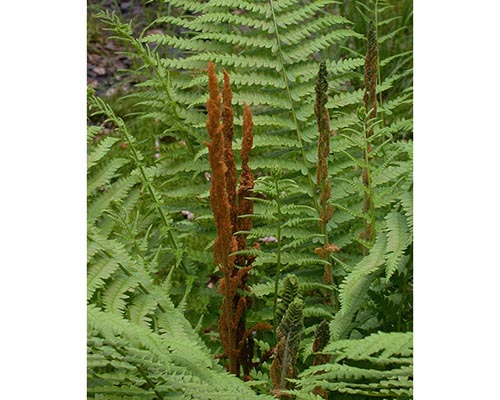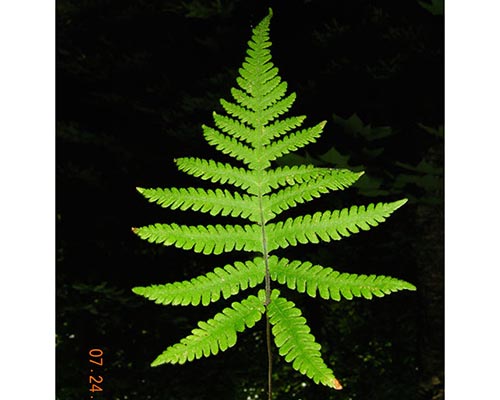The ferns and their relatives first appear in the fossil record some 360 million years ago in the late Devonian period. They diversified into many of the modern fern families and species during the “great fern radiation” of the Cretaceous period, from 145 to 66 million years ago. Like the clubmosses (see Plant Evolution I), the ferns are early vascular plants that rely on water for sexual reproduction because they have free-swimming sperm. Because of this, they are limited during sexual reproduction to relatively moist environments. This characteristic is less restrictive than one might expect. Besides shady forest areas, as at this station, ferns can also grow in crevices in rock faces, in acid environments such as bogs and swamps and as epiphytes — plants that grow on other plants — on tropical rainforest trees.
On the Waldbauer trail you can see at least eight species of ferns. Six are detailed below. One way to identify ferns is by the shape, arrangement and location of their “sori” — small clusters of spore-producing structures found on the undersides of fern leaves, best viewed with a hand lens.
The spinulose woodfern (Dryopteris carthusiana) is found in moist climax woodlands. This fern is one of the most abundant species in New York forests and is the dominant fern in this forest. It can be recognized by its dark green, lacy fronds, which are evergreen except in harsh winters. Its sori are kidney-shaped. The hay-scented fern (Dennstaedtia punctilobula) is one of the few sun-loving ferns in the Adirondacks. It is found in both partial shade and direct sun in meadows, fields and rocky outcrops, usually in large communities. It has yellowish-green, lacy fronds that are deciduous and become ragged in late summer. Its sori resemble tiny bird’s nests.
The New York fern (Thelypteris noveboracensis) grows in sunny and semi-shaded climax forest areas. This fern, with its light green, delicate foliage, can be easily distinguished from other ferns in this area by the way its fronds are widest at the middle, tapering at both the tip and base. It is common here and often grows in large communities. Its sori are small and round.
The sensitive fern (Onoclea sensibilis) grows in wet habitats along stream banks, woodland edges and in open fields. This fern is dimorphic; it has deciduous sterile fronds that are a bright yellow-green without sori, but it also has fertile fronds that are much smaller, have sori clustered like beads or grapes and are often brown. Both frond types are pictured.
The cinnamon fern (Osmunda cinnamomea) is a beautiful, graceful fern that grows to 5 feet in optimum habitats such as swamps, bogs and moist woodlands. Its large, green sterile fronds are identifiable by the tufts of brown fuzz at their bases while its fertile fronds are cinnamon-colored. This fern is a “living fossil,” seen in the fossil record up to 75 million years ago.
The northern beech fern (Phegopteris connectilis) grows in semi-shaded, moist climax woodlands, more commonly in northern regions and high elevations. It is often associated with rocky outcrops and waterfalls. Its fronds are small, light green and triangular. One identifying characteristic is that the first pair of leaflets attach to the stem at a 45° angle.
Keep an eye out for these ferns as you encounter their different habitats along the Waldbauer trail.

